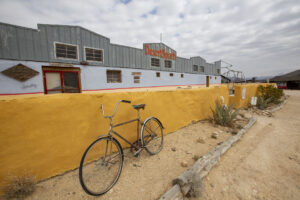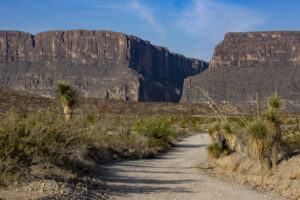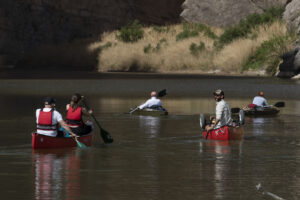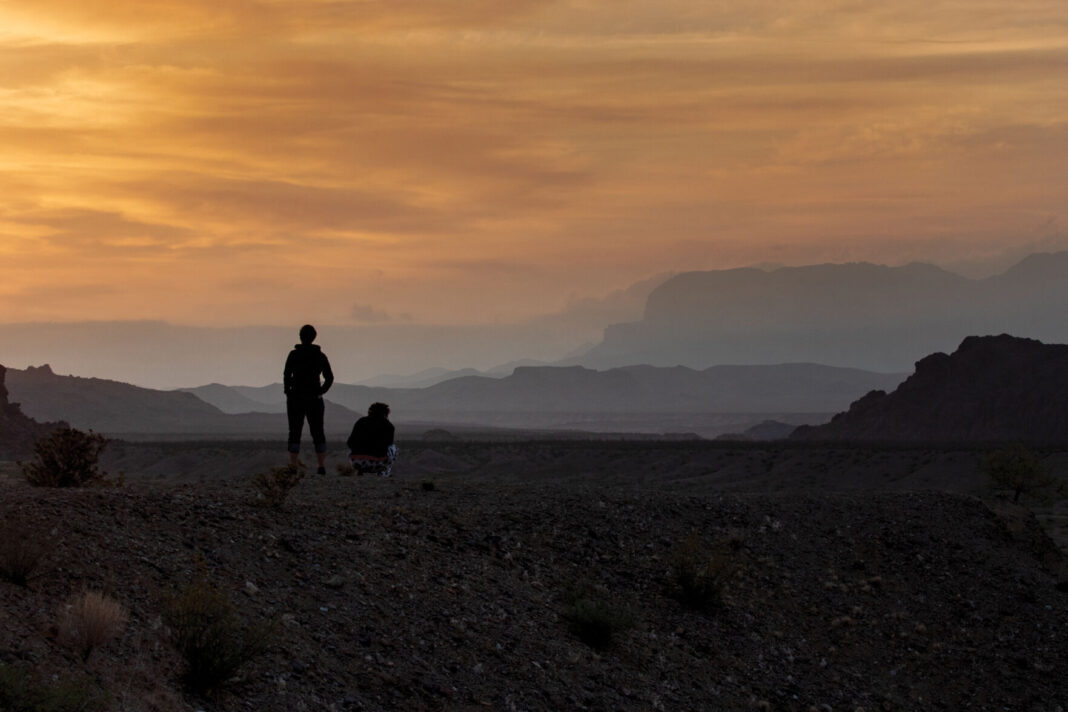TERLINGUA Located deep in southwestern Brewster County, near the Rio Grande and the villages of Lajitas and Study Butte and just off highway 170, lies the small “ghost town” of Terlingua.

(Jacob Ford | Odessa American)
A former mining community from the early 20th century, the small settlement soon became a ghost town of roofless rock structures after the mines closed in the 1940s and Terlingua was abandoned.
The town has since bounced back as a tourist destination for park visitors due to its proximity to Big Bend National Park.
Rafting and canoeing as well as mountain biking, camping and hiking are some of the major items that brings visitors to this deep desert enclave and it helps keep businesses such as Desert Sports in Terlingua open.
Desert Sports was founded in the late 1980s by Mark Mills and operated out of Lajitas.
However, after a couple of changes in ownership as well as a few location moves, Desert Sports was incorporated in 1996 by Jim Carrico, former superintendent of Big Bend National Park as well as Mike Long.
Its owners, who have been there for years, have a vast expertise of the area and help tourists find their way around.
“We’ve been in business since 1996 and so we have a lot of knowledge and experience in the area,” Crystal Allbright, co-owner of Desert Sports said. “We offer river tours whether it’s canoeing or water rafting, it depends on the water levels. We also offer mountain bike rentals as well. We help some folks with shuttles. With our knowledge with the area, we can help people out.”
Desert Sports has specialized in guided backcountry tours with small but dedicated staff that helps people explore their corner of the Chihuahuan Desert.

(Jacob Ford | Odessa American)
Their specialty trips of mountain biking, river running, hiking and combo tours help offer visitors some of the most unique itineraries in Big Bend National Park and Big Bend Ranch State Park.
A major part that draws people to Desert Sports, Allbright said, is their canoe expedition through the lower canyons of the Rio Grande Wild and Scenic River.
“The most popular thing is probably getting on the river to see one of the canyons in the national park or Big Bend Ranch State Park,” Allbright said.
However, that’s only available when it’s in the right season.
“When the river is up and running and flowing well which is usually late in the summer and fall, then we can go downstream through the canyon,” Allbright said. “It’s a 20 mile trip. At lower water, we can still see the canyon, we paddle up stream into the canyon. When it’s low, we take canoes and explore that way so you get a good feel for the tall, narrow limestone walls.”
Lately, Allbright said, the water’s been so low, that they’re currently not renting equipment or taking tours, but people can still hike into the canyons three quarters of a mile.
The biking trails remain open. Desert Sports also contains its own bike shop that operates in a large adobe building.
“That’s grown in popularity,” Allbright said. “We’ve worked really hard to establish really nice trails. Those trails are open. If people are going to ride here in the hotter months then they definitely want to ride early in the morning and be off the trails around noon.”
This week, the cold front that has come through the basin has been welcome, according to Allbright, as temperatures in Terlingua have been around the 70s and 60s.

(Jacob Ford | Odessa American)
“That helped us (Tuesday) morning,” Allbright said while laughing. “It’s been in the 90s here. we’re still advising folks to ride earlier in the days but just being flexible with the weather has been another important thing that tourists and visitors should be flexible with.”
It’s hard to tell how many visitors Desert Sports receives every year, according to Allbright, but she mentioned that spring break and the winter months are usually the busiest times of the year.
“I don’t have numbers but when we’re the busiest is spring break and then most of the winter holidays like Christmas,” Allbright said. “April is gaining some popularity. It’s a good time if we’ve had a bunch of rain, for the wildflowers so right now, a bunch of the cactus is in full bloom.”
The winter months have been big for tourists who can’t make it out there during spring break.
“If people have flexibility and try to avoid the busiest times and come in February or April it’s pretty good,” Allbright said.
Because May and June are the hottest months, that’s when they start to see much less business and less hours opened.
“We actually close in June because the temperatures are high and the waters are low,” Allbright said.
However, the months between October and April are what Allbright calls their “high seasons.”
“We’re opened seven days a week from 9 a.m. to 6 p.m.” Allbright said. “Then, starting in May, we close one day a week and then cut back on our hours until October again.”
The pandemic forced parks everywhere to shut down for a time last year before gradually reopening and Desert Sports was one that was dealt a heavy blow from the COVID-19 closures.
“We closed mid-March, right in the middle of our busy season and then didn’t reopen until Aug. 1,” Allbright said. “Our bike shop was able to stay open and we were able to get a little bit of retail because bike repairs were considered essential. We were able to get help with loans and things to get us through time and help our employees. A lot of our staff does travel north during the summer to work other rivers and other areas where it’s a little cooler.”
While hiking and canoeing, visitors can often see a range of animals with javelinas, foxes and coyotes being the most common ones to see, according to Allbright.
However, Allbright said they are concerned about the wildfires in the area forcing some animals to migrate including black bears.
“Less common are the black bears and that’s one thing that we’re worried about with the fires and if that’s displacing them or what’s happening there,” Allbright said. “Occasionally, you’ll see bears in the mountains but they’re not aggressive. The park doesn’t want them to get used to people.”
Allbright also mentioned mountain lions but those are also rare.
“If someone sees a mountain lion, usually that mountain lion is elderly, has abscess teeth and is getting desperate,” Allbright said.
As for flowers, bluebonnet season will bring most of the state’s flowers around the area, if there’s enough rain.
“We had a pretty decent bluebonnet season,” Allbright said. “But we didn’t have a lot of rain this year so they’ve already phased out. Right now, it’s the cactus and things like that. There’s all these tiny flowers that some people don’t notice so we urged people to take time to look at them when they’re out.”
Through the last 20 years, the small staff (which includes eight-10 people) at Desert Sports has continued to focus on other people’s needs who are traveling through the area.
“We’re a small company,” Allbright said. “We have a small staff. All of our guides have worked here for a long time, some for over 20 years. We have newer ones who have worked here for 10 years.”




